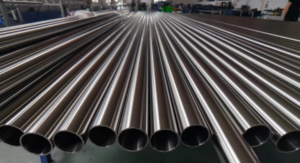High-speed steel, an alloy material renowned for its exceptional comprehensive properties, boasts high hardness, strength, wear resistance, heat resistance, and corrosion resistance. These attributes have earned it widespread applications in sectors such as aerospace, automotive electronics, and machining. Given the diverse applications and varying performance requirements of high-speed steel, corresponding standards and specifications are crucial for facilitating daily use, production, and utilization. In this article, let’s take a closer look at the international standards and specifications for high-speed steel.

International Standards and Specifications for High-Speed Steel:
The formulation of appropriate standards and specifications for high-speed steel significantly impacts its quality, performance, and reliability. Firstly, rigorous standards during manufacturing can minimize defects and enhance steel quality. Secondly, comprehensive standards facilitate technological innovation and advancements in high-speed steel. Lastly, manufacturing standards optimize production processes, enhancing efficiency.
Globally, various standards and specifications have been established based on high-speed steel’s properties like hardness, strength, plasticity, toughness, wear resistance, heat resistance, and corrosion resistance. Among the prominent international standards for high-speed steel are ISO, AISI, DIN, JIS, and ASTM. ISO standards, notably ISO4957, ISO4950, and ISO683, are the most widely adopted, with ISO4957 being particularly common.
China, too, has established comprehensive standards and specifications for high-speed steel. According to the “Steel Industry Product Standards,” China’s high-speed steel standards primarily fall under GB/T, JB/T, and YB/T. Specifically, GB/T standards are nationally recommended, JB/T standards are industry-specific, and YB/T standards are regional. Among these, GB/T9943-2008 for cutting tool steel and GB/T1299-2014 for high-speed steel are the most widely used.
There are notable differences between international and domestic standards. International standards cater to varying usage demands and environmental requirements across different countries and regions, while domestic standards focus on material composition, chemical properties, and technical specifications. Additionally, industry-specific standards exist, with the automotive industry often adopting JIS standards and the aerospace industry favoring SAE standards from the United States.
Conclusion
In conclusion, high-speed steel, as a vital and ubiquitous material, finds widespread applications across numerous sectors. Understanding its standards and specifications is paramount for selecting precise materials and ensuring safer, more reliable manufacturing processes.
Why Choose Sino Special Metal?
Thank you for reading our article and we hope it can help you to have a better understanding of the international standards and specifications for high-speed steel. If you are looking for suppliers and manufacturers of high-speed steel, we would advise you to visit Sino Special Metal.
As a leading supplier of high-speed steel from Shanghai China, Sino Special Metal offers customers high-quality M2 High-Speed Steel, M35 High-Speed Steel, and M42 High-Speed Steel at a very competitive price.




